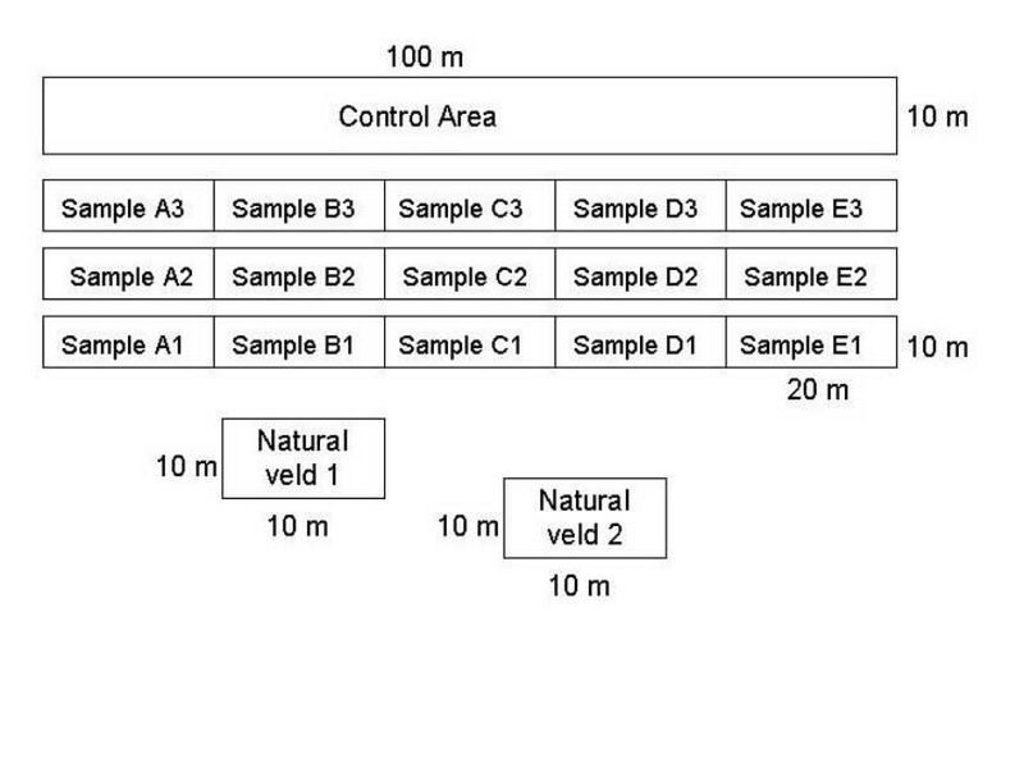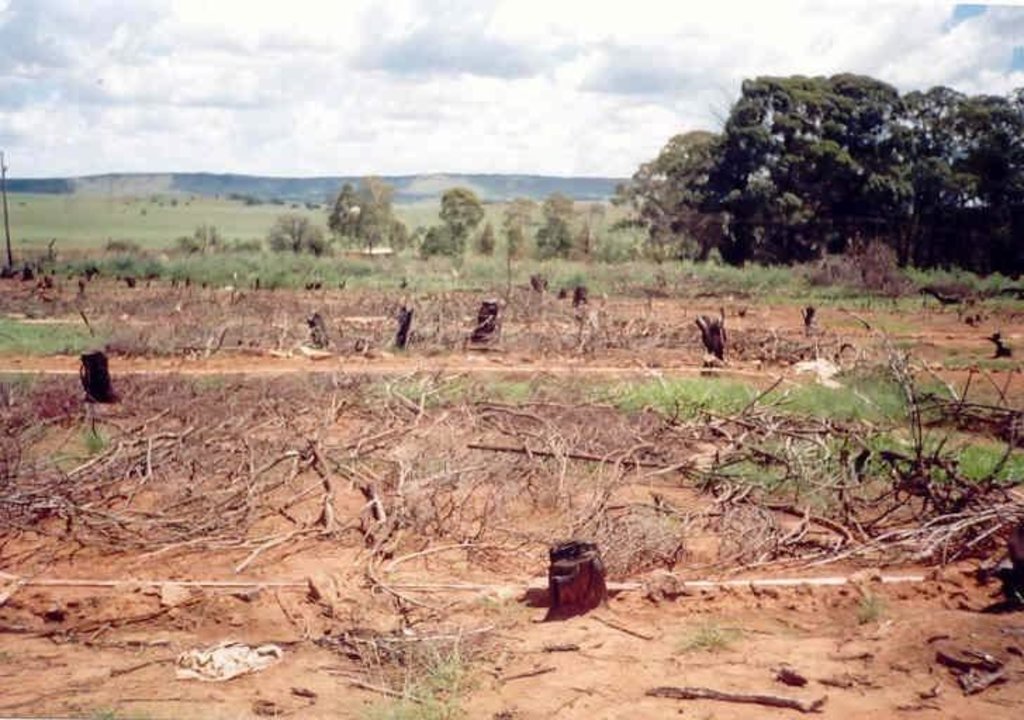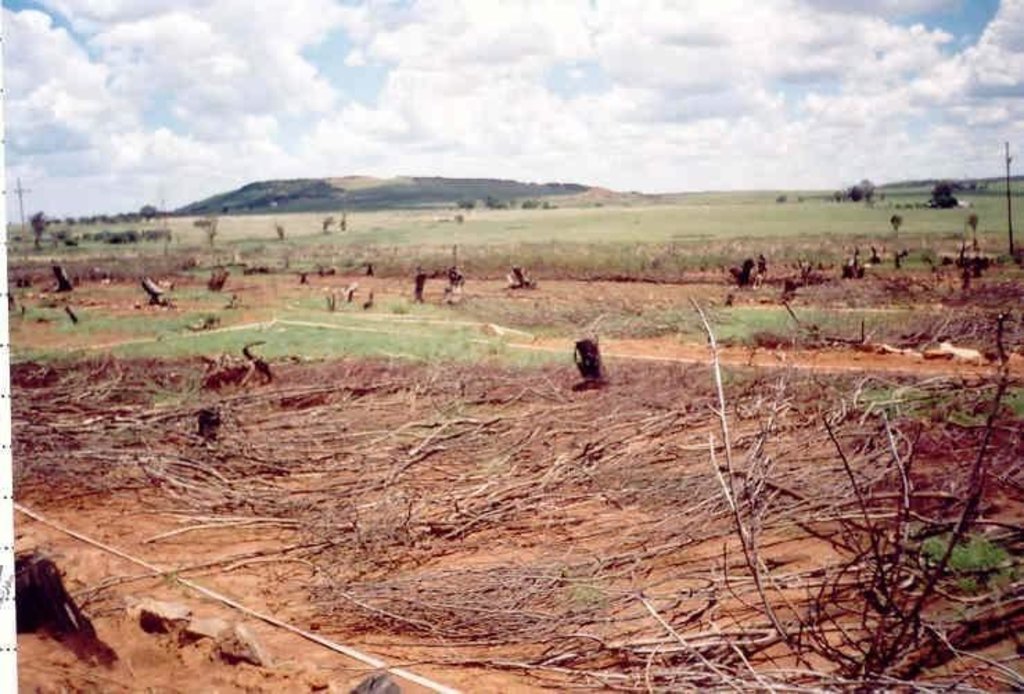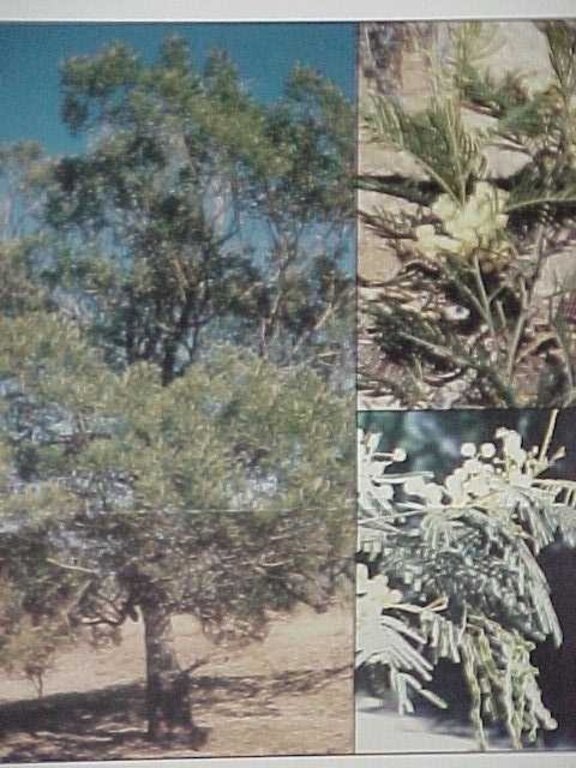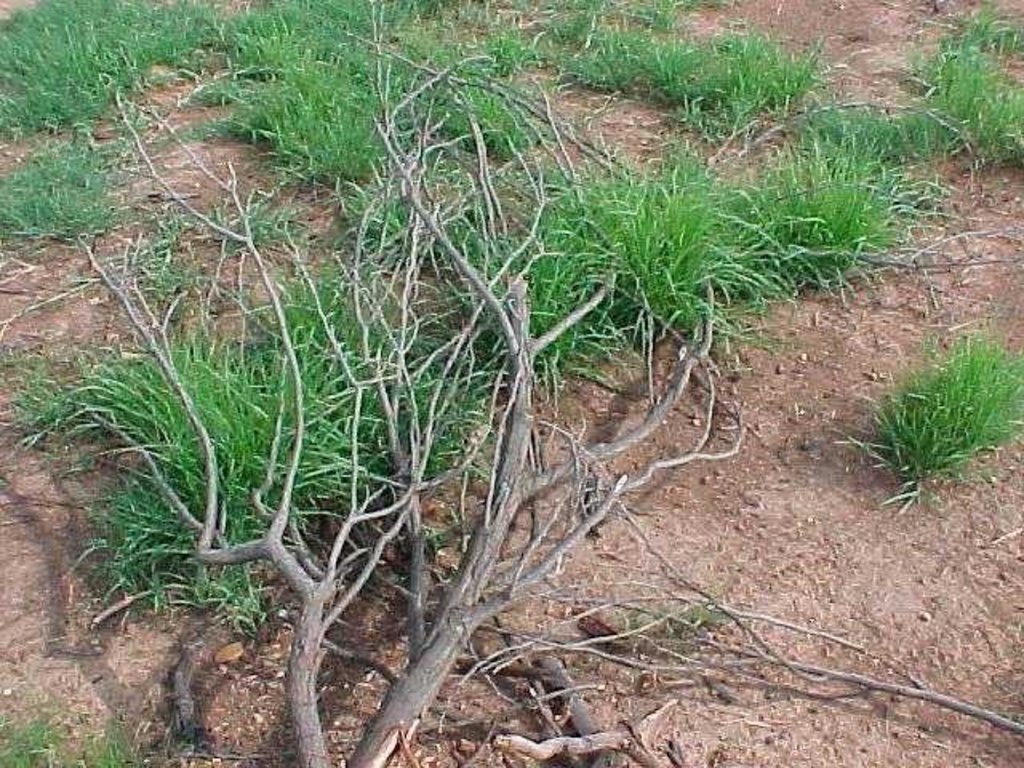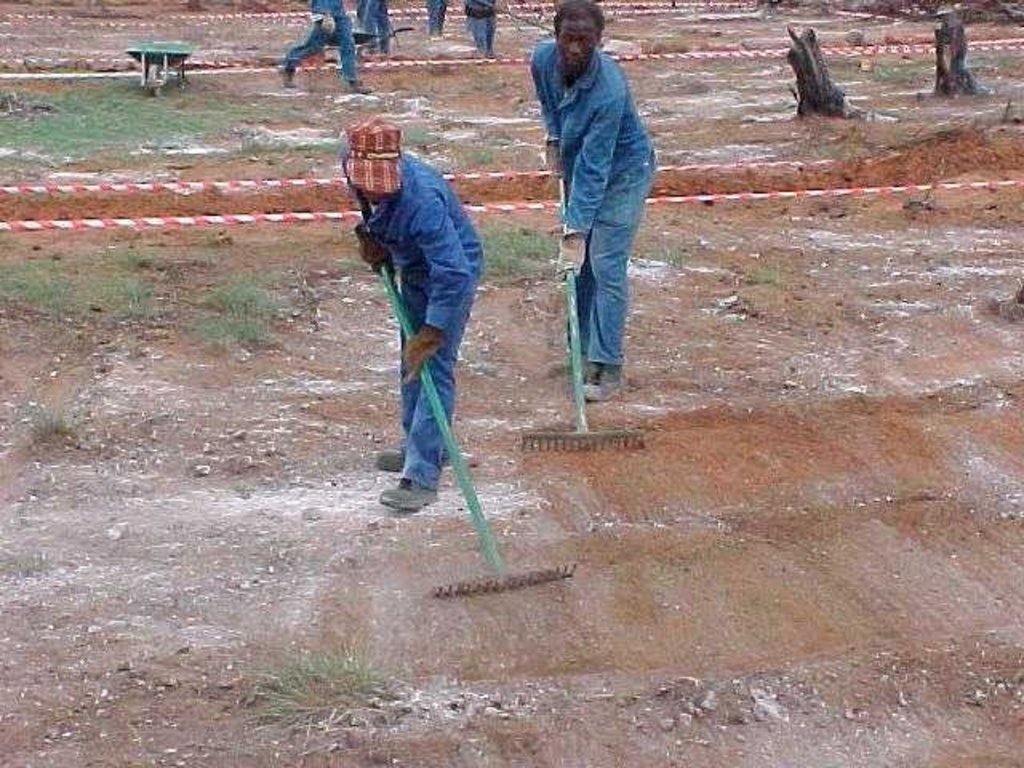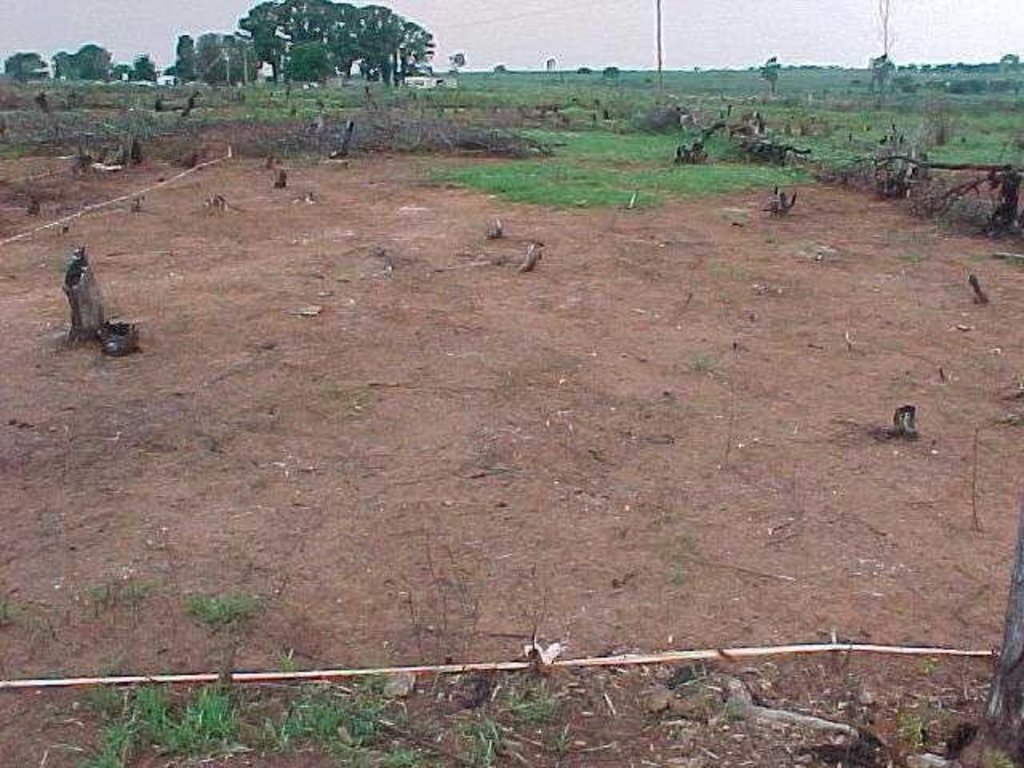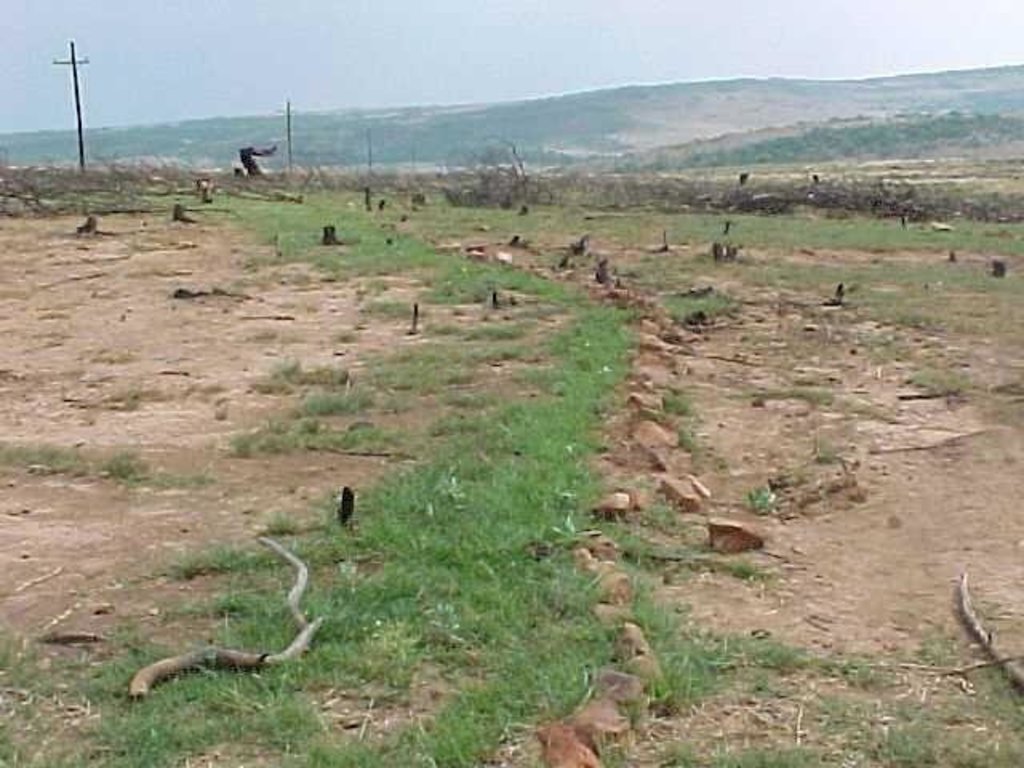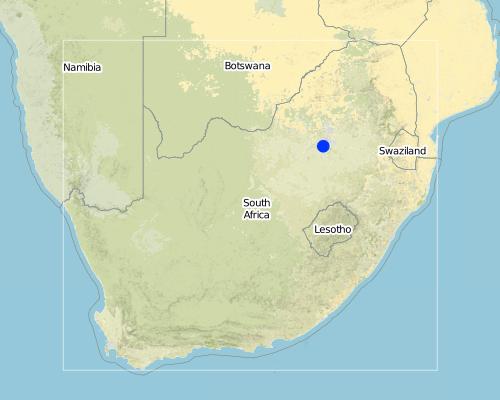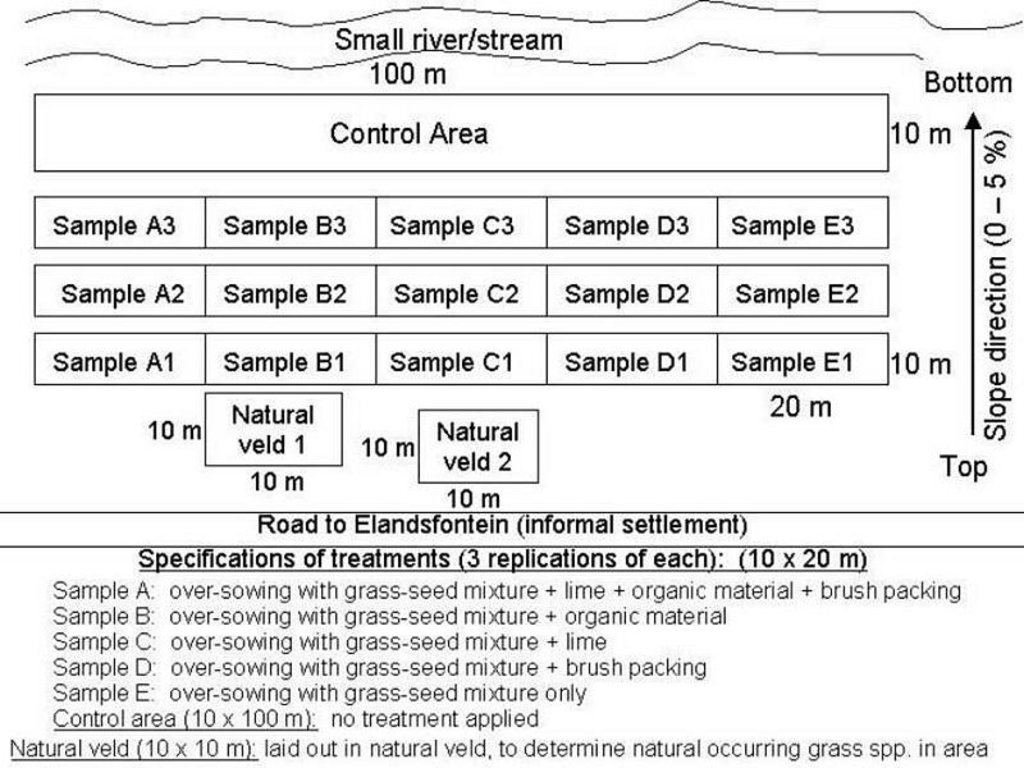Restoration of degraded rangeland [South Africa]
- Creation:
- Update:
- Compiler: Klaus Kellner
- Editor: –
- Reviewer: Deborah Niggli
Rehabilitation/restoration of an area, after control of alien invasive species.
technologies_1416 - South Africa
View sections
Expand all Collapse all1. General information
1.2 Contact details of resource persons and institutions involved in the assessment and documentation of the Technology
SLM specialist:
Van Rensburg Leon
PU for CHE, Potchefstroom, 2520.
South Africa
SLM specialist:
Fulls Erich
PU for CHE, Potchefstroom, 2520.
South Africa
Name of project which facilitated the documentation/ evaluation of the Technology (if relevant)
Book project: where the land is greener - Case Studies and Analysis of Soil and Water Conservation Initiatives Worldwide (where the land is greener)Name of project which facilitated the documentation/ evaluation of the Technology (if relevant)
Sustainable Land Management Practices of South Africa (SLM South Africa)1.3 Conditions regarding the use of data documented through WOCAT
When were the data compiled (in the field)?
28/09/2001
The compiler and key resource person(s) accept the conditions regarding the use of data documented through WOCAT:
Yes
1.4 Declaration on sustainability of the described Technology
Is the Technology described here problematic with regard to land degradation, so that it cannot be declared a sustainable land management technology?
No
2. Description of the SLM Technology
2.1 Short description of the Technology
Definition of the Technology:
Eradication of invasive species and revegetation of degraded rangelands by different treatments, including oversowing with grass seed mixture, supplementing with lime, cattle dung, and "brush packing" (laid out branches).
2.2 Detailed description of the Technology
Description:
A research investigation was undertaken in an area of degraded communal rangeland, which had been invaded by an alien tree species (Acacia mearnsii – black wattle). Competition from the water-demanding A. mearnsii, combined with overgrazing, had resulted in an almost total absence of palatable grasses. All that was left were a few patches of star grass (or ‘bermuda grass’: Cynodon dactylon). Prior to the research, discussions were held between personnel of the ‘Working for Water’ programme of the South African government and community members.
The purpose of the trials was to determine how best to eradicate the invasive trees and revegetate the rangeland. The restoration area was not fenced off and was thus open to grazing. The trials comprised five treatments, with three replicates each, on plots of 10 m by 20 m. In all treatments the A. mearnsii was eradicated manually, and chemical biocide applied to the stumps to prevent regrowth. Lime and grass seed (of palatable species) were applied to the loosened surface and covered with soil. The five treatments were:
(A) oversowing with grass seed mixture, supplementing of dolomitic lime, cattle dung, and ‘brush packing’ (see below for explanation of term);
(B) oversowing with grass seed mixture and supplementing with cattle dung;
(C) oversowing with grass seed mixture and supplementing with dolomitic lime;
(D) oversowing with grass seed mixture and brush packing;
(E) oversowing with grass seed mixture only.
In addition stone lines were laid out along the contour, between plots. The ‘brush packing’, referred to in treatments A and D comprised branches laid out in strips across the slope to retard runoff, trap soil, improve the micro-climate for establishing grass seedlings and protect the young plants from browsing by animals. The results showed treatment A to be the most effective in restoring the productive and protective function of the rangeland. From the trials, the estimated costs of applying the best technology would be US$ 230 per hectare. The key constraints for successful adoption however are not just technical, but include: (1) the need to protect the area from grazing and trampling by animals during the establishment period; (2) stopping removal of brushwood for firewood; and (3) the need for community agreement on initial protection and subsequent sustainable utilisation of the restored range.
Establishment activities:
1.Manual eradication of trees with chain saw and axe
2.Application of chemical biocide to the stumps to prevent any regrowth
3.Ripping of soil surface to a depth of 5 cm using a three tined hand implement
4.Application of dolomitic lime and raking it into soil after ripping of the soil
5.Application of organic material (cattle dung) after ripping and lime application
6.Oversowing with grass seed mixture after ripping of the soil and application of lime and organic material
7.Brush packing against contour and packing of rock contours against the slope All the branches and stones were collected from the restoration area. Rock contours were packed against (perpendicular) to the slope in the study area at varying intervals (approximately 10-15 m apart) in order to retard runoff water, trap soil, and improve conditions for seed germination (see inserted drawing below and attachment). Branches were packed (brush packing) along the slope in certain treatments within the study site in order to trap soil, retard runoff water en serve as a micro-climate for germinating and establishing grass seedlings
Total duration of restoration took 3 years, from removal of trees till revegetation trials were laid out and technology was established.
Maintenance / recurrent activities per year:
Following initial establishment maintenance was limited to 2 follow up applications of herbicide (after 3 and 5 months). Maintenance of contours was not done after restoration.
2.3 Photos of the Technology
2.5 Country/ region/ locations where the Technology has been applied and which are covered by this assessment
Country:
South Africa
Region/ State/ Province:
Gauteng
Further specification of location:
Johannesburg
Map
×2.6 Date of implementation
If precise year is not known, indicate approximate date:
- less than 10 years ago (recently)
2.7 Introduction of the Technology
Specify how the Technology was introduced:
- during experiments/ research
Comments (type of project, etc.):
It originated from the overall need to restore degraded rangelands.
3. Classification of the SLM Technology
3.1 Main purpose(s) of the Technology
- reduce, prevent, restore land degradation
3.2 Current land use type(s) where the Technology is applied

Grazing land
Extensive grazing land:
- Semi-nomadism/ pastoralism
Comments:
Major land use problems (compiler’s opinion): Occurrence of bare areas after control of alien invasive.
Major land use problems (land users’ perception): Minimal grazing for cattle, due to the occurrence of bare areas.
Grazingland comments: No area closure, thus livestock graze freely on statelands and thus causes overgrazing over a large area.
This is a constraint to management in grazing lands. No rotational grazing. No area closure, thus livestock graze freely on statelands and thus causes overgrazing over a large area.
3.3 Further information about land use
Water supply for the land on which the Technology is applied:
- rainfed
Number of growing seasons per year:
- 1
Specify:
Longest growing period in days: 210, Longest growing period from month to month: Oct - April
3.4 SLM group to which the Technology belongs
- pastoralism and grazing land management
3.5 Spread of the Technology
Specify the spread of the Technology:
- evenly spread over an area
If the Technology is evenly spread over an area, indicate approximate area covered:
- 1-10 km2
Comments:
Total area covered by the SLM Technology is 9 m2.
Big area near settlement, was previously invaded by alien invasive species (such as A. mearnsii). Aim was to eradicate this species by using chemical/manual methods and to revegetate area with grass species occurring naturally.
3.6 SLM measures comprising the Technology

agronomic measures
- A6: Others

vegetative measures
- V5: Others

structural measures
- S11: Others
Comments:
Specification of other agronomic measures: manuring, lime, 'brush packing' (trash lines)
Specification of other vegetative measures: oversowing grass seed mixture
Specification of other structural measures: stone lines
Type of vegetative measures: in blocks
3.7 Main types of land degradation addressed by the Technology

soil erosion by water
- Wt: loss of topsoil/ surface erosion

chemical soil deterioration
- Cn: fertility decline and reduced organic matter content (not caused by erosion)

physical soil deterioration
- Pc: compaction

biological degradation
- Bc: reduction of vegetation cover
Comments:
Main causes of degradation: deforestation / removal of natural vegetation (incl. forest fires) (Alien invasives.), over-exploitation of vegetation for domestic use (Trampling.), overgrazing (Cattle and goat.)
Secondary causes of degradation: poverty / wealth (Lack of captial - To pay labours to apply technologies.), labour availability (Lack of labour - To remove alien species.)
3.8 Prevention, reduction, or restoration of land degradation
Specify the goal of the Technology with regard to land degradation:
- reduce land degradation
- restore/ rehabilitate severely degraded land
4. Technical specifications, implementation activities, inputs, and costs
4.1 Technical drawing of the Technology
4.2 Technical specifications/ explanations of technical drawing
Specifications
Location: Elandsfontein. Gauteng
Technical knowledge required for field staff / advisors: high
Technical knowledge required for land users: moderate
Main technical functions: control of raindrop splash, control of dispersed runoff: retain / trap, increase in organic matter, sediment retention / trapping, sediment harvesting, increase in soil fertility, improvement of ground cover
Secondary technical functions: control of dispersed runoff: impede / retard, reduction of slope angle, increase of surface roughness, increase of infiltration, water harvesting / increase water supply, water spreading, reduction in wind speed, improvement of soil structure
Vegetative measure: contour
Vegetative material: O : other
Number of plants per (ha): 0
Vertical interval between rows / strips / blocks (m): 0.3
Spacing between rows / strips / blocks (m): 3
Vertical interval within rows / strips / blocks (m): 0
Width within rows / strips / blocks (m): 0.3
Vegetative measure: Vegetative material: O : other
Grass species: Mixture of perennial and annual grasses
Other species: rocks
Slope (which determines the spacing indicated above): 5.00%
4.3 General information regarding the calculation of inputs and costs
other/ national currency (specify):
Rand
Indicate exchange rate from USD to local currency (if relevant): 1 USD =:
8.2
Indicate average wage cost of hired labour per day:
4.30
4.4 Establishment activities
| Activity | Type of measure | Timing | |
|---|---|---|---|
| 1. | Eradication of trees, Follow-up with herbicide | Vegetative | beginning of project |
| 2. | Loosening of soil, Lime application | Vegetative | 6 months |
| 3. | Application of organic material | Vegetative | 6 months |
| 4. | Oversowing with grass seed mixture | Vegetative | 6 months |
| 5. | Brush packing | Vegetative | 6 months |
4.5 Costs and inputs needed for establishment
| Specify input | Unit | Quantity | Costs per Unit | Total costs per input | % of costs borne by land users | |
|---|---|---|---|---|---|---|
| Labour | labour | ha | 1.0 | 35.0 | 35.0 | |
| Equipment | machine use | ha | 1.0 | 65.0 | 65.0 | |
| Equipment | tools | ha | 1.0 | 5.0 | 5.0 | |
| Plant material | seeds | ha | 1.0 | 70.0 | 70.0 | |
| Fertilizers and biocides | fertilizer | ha | 1.0 | 25.0 | 25.0 | |
| Fertilizers and biocides | biocides | ha | 1.0 | 30.0 | 30.0 | |
| Total costs for establishment of the Technology | 230.0 | |||||
Comments:
Duration of establishment phase: 35 month(s)
4.6 Maintenance/ recurrent activities
| Activity | Type of measure | Timing/ frequency | |
|---|---|---|---|
| 1. | 2 Follow-ups with herbicide | Vegetative | after 3 & 5 months after application of technology /twice (at 3 and 5 months ) |
4.7 Costs and inputs needed for maintenance/ recurrent activities (per year)
| Specify input | Unit | Quantity | Costs per Unit | Total costs per input | % of costs borne by land users | |
|---|---|---|---|---|---|---|
| Labour | labour | ha | 1.0 | 7.0 | 7.0 | |
| Equipment | tools | ha | 1.0 | 5.0 | 5.0 | |
| Fertilizers and biocides | biocides | ha | 1.0 | 20.0 | 20.0 | |
| Total costs for maintenance of the Technology | 32.0 | |||||
Comments:
Eradication, seed purchasing, materials.
4.8 Most important factors affecting the costs
Describe the most determinate factors affecting the costs:
Biocides, fertilisers (lime), seeds and labour have a great effect on costs.
5. Natural and human environment
5.1 Climate
Annual rainfall
- < 250 mm
- 251-500 mm
- 501-750 mm
- 751-1,000 mm
- 1,001-1,500 mm
- 1,501-2,000 mm
- 2,001-3,000 mm
- 3,001-4,000 mm
- > 4,000 mm
Specifications/ comments on rainfall:
600 - 800 mm/annum
Agro-climatic zone
- sub-humid
5.2 Topography
Slopes on average:
- flat (0-2%)
- gentle (3-5%)
- moderate (6-10%)
- rolling (11-15%)
- hilly (16-30%)
- steep (31-60%)
- very steep (>60%)
Landforms:
- plateau/plains
- ridges
- mountain slopes
- hill slopes
- footslopes
- valley floors
Altitudinal zone:
- 0-100 m a.s.l.
- 101-500 m a.s.l.
- 501-1,000 m a.s.l.
- 1,001-1,500 m a.s.l.
- 1,501-2,000 m a.s.l.
- 2,001-2,500 m a.s.l.
- 2,501-3,000 m a.s.l.
- 3,001-4,000 m a.s.l.
- > 4,000 m a.s.l.
5.3 Soils
Soil depth on average:
- very shallow (0-20 cm)
- shallow (21-50 cm)
- moderately deep (51-80 cm)
- deep (81-120 cm)
- very deep (> 120 cm)
Soil texture (topsoil):
- medium (loamy, silty)
Topsoil organic matter:
- low (<1%)
5.6 Characteristics of land users applying the Technology
Market orientation of production system:
- subsistence (self-supply)
- commercial/ market
Off-farm income:
- > 50% of all income
Relative level of wealth:
- average
- very rich
Indicate other relevant characteristics of the land users:
Population density: 10-50 persons/km2
Annual population growth: 3% - 4%
80% of the land users are very rich (informal settlers and own 60% of the land (government).
20% of the land users are average wealthy and own 40% of the land (farmers).
Off-farm income specification: Informal settlers work in the city/mine, also mostly live of old age pension funds. Farmers (low percentage) have an income on-farm by means of selling cattle, crops and dairy products.
5.7 Average area of land owned or leased by land users applying the Technology
- < 0.5 ha
- 0.5-1 ha
- 1-2 ha
- 2-5 ha
- 5-15 ha
- 15-50 ha
- 50-100 ha
- 100-500 ha
- 500-1,000 ha
- 1,000-10,000 ha
- > 10,000 ha
5.8 Land ownership, land use rights, and water use rights
Land ownership:
- state
- provincial government
- provincial government
6. Impacts and concluding statements
6.1 On-site impacts the Technology has shown
Socio-economic impacts
Production
land management
Comments/ specify:
Brush packing was removed by community members for firewood.
Income and costs
farm income
workload
Comments/ specify:
Not all labourers could be employed, more would have like to have the job (money).
Socio-cultural impacts
community institutions
SLM/ land degradation knowledge
Comments/ specify:
Capacity building awareness
conflict mitigation
Comments/ specify:
Farmers not positive about SWC project and effect.
Ecological impacts
Water cycle/ runoff
excess water drainage
Soil
soil moisture
soil cover
soil loss
Quantity before SLM:
2
Quantity after SLM:
1
Climate and disaster risk reduction
wind velocity
6.2 Off-site impacts the Technology has shown
downstream flooding
downstream siltation
wind transported sediments
6.4 Cost-benefit analysis
How do the benefits compare with the establishment costs (from land users’ perspective)?
Short-term returns:
slightly negative
Long-term returns:
positive
How do the benefits compare with the maintenance/ recurrent costs (from land users' perspective)?
Short-term returns:
positive
Long-term returns:
slightly negative
6.5 Adoption of the Technology
Comments:
10 land user families have adopted the Technology with external material support
1 land user families have adopted the Technology without any external material support
There is a little trend towards spontaneous adoption of the Technology
6.7 Strengths/ advantages/ opportunities of the Technology
| Strengths/ advantages/ opportunities in the land user’s view |
|---|
| Gazing improvement. |
| Strengths/ advantages/ opportunities in the compiler’s or other key resource person’s view |
|---|
| Improvement of grazing resources. |
| Improved soil moisture availability by removing an alien species with a high water demand. |
| Reduced erosion by controlling runoff. |
6.8 Weaknesses/ disadvantages/ risks of the Technology and ways of overcoming them
| Weaknesses/ disadvantages/ risks in the compiler’s or other key resource person’s view | How can they be overcome? |
|---|---|
| The question of controlling ‘open access’ grazing by the community is the key to long-term success of rehabilitation | It is incumbent on the local municipal council to negotiate with communities regarding grazing control and community-based natural resource management more generally. |
| Removal of brushwood for firewood by community members and other aspects of long-term maintenance | See above: perhaps also seeking funds to pay labourers and buy biocides |
| Too many cattle and goats. | Reduce numbers to match grazing resources available |
| Insufficient aftercare. | Secure additional funds to pay labourers and buy biocides. |
7. References and links
7.1 Methods/ sources of information
- field visits, field surveys
- interviews with land users
7.2 References to available publications
Title, author, year, ISBN:
Soil classification: A taxonomic system for South Africa.. 1991.
Available from where? Costs?
ARC -Institute for Soil, Climate and Water, Pretoria. 012 - 3102500.
Title, author, year, ISBN:
Harris J.A., Birch P., Palmer J.P. Land restoration and reclamation.. 1996.
Title, author, year, ISBN:
Kent M, Coker P. Vegetation description and analysis.. 1997.
Title, author, year, ISBN:
Tainton N. Veld management in South Africa.. 1999.
Title, author, year, ISBN:
Acocks. Veld types of South Africa.. 1988.
Title, author, year, ISBN:
HARRIS, J. A., BIRCH, P. AND PALMER, J. P. Land restoration and reclamation – Principles and Practices. Addison Wesley Longman, England. 230 p.. 1996.
Links and modules
Expand all Collapse allLinks
No links
Modules
No modules




